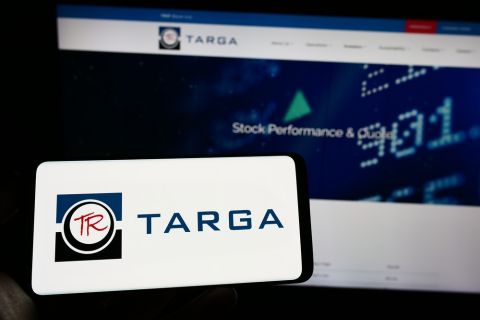Once a company completes an initial public offering, how does it attract investor interest to assure its stock price fully reflects the value of the company-or better yet, garners a premium? In the capital-intensive energy industry where raising capital for exploration, development and acquisitions is key to survival, a company's investor-relations program must be effective, to support its stock-price multiple. Two of the most daunting tasks facing a small-cap company are obtaining sellside research coverage and attracting institutional investors. One can never assume that just because an E&P company is doing well, these key audiences will recognize the value and buy the stock. Many chief executive officers assume that if their company is performing well, investors will automatically recognize the value. Not true. With hundreds of microcap and small-cap energy companies vying for sellside recognition and research coverage, most analysts cannot possibly attend to them all. Many companies have only one analyst or none following the stock, actively writing and reporting on the company. This lack of coverage is a detriment when trying to attract not only institutional investors, but individual investors as well. It hinders public capital-raising efforts, which may be needed for the company to execute its business plan, and it can make capital more expensive. There are many reasons the small-cap may experience difficulty: • The sheer number that are all vying for sellside research coverage from a limited number of analysts, • The fact that sellside analysts focus first on companies that are easier to understand and model, and • Because sellside analysts often focus on companies that use their investment-banking services. In light of these challenges, a small-cap must be ready to devote time and money to the IR effort and use every available tool: press releases, conference presentations, one-on-one visits, the Internet, media events and so on. No small task. At the recent National Investor Relations Institute's annual conference, an entire day was devoted to IR issues for small-cap companies. With the drop in valuations due to a general stock-market decline, many companies that were once mid- to large-cap are today small- or microcap. Fortunately, energy companies weathered the storm better than many other industries. In today's marketplace, companies with a market cap of less than $500 million are referred to as "orphaned" due to a lack of support from the sellside community. Prohibitions on many institutional investors prevent investment in small-cap companies-those that trade under $5 per share-or those with very little liquidity. And further, the financial press is less likely to cover any news stories regarding a small-cap company. "Companies must have a stock price of at least $5 per share and reasonable liquidity in the stock for CNBC to pick up a story," said Consuelo Mack, co-anchor of CNBC's "Market Watch" program, at the NIRI meeting. How to be visible How does a small-cap obtain sellside research coverage from several investment banking firms? In several ways. One of the most crucial elements is to make it easier for analysts to obtain information on the company, and to give them equal access. It is imperative to keep the analysts and the investing public informed about the company's activities and its prospect for growth. This requires publishing more press releases, and now under Regulation FD, publishing some form of a forecast, which will allow analysts to develop their own models on the company. It is essential that the company keep sending current information to the marketplace. Jeff Robertson, who covers small-cap energy companies for Lehman Brothers in New York, suggests they must make themselves visible. "A company can have a great story but without the analysts' awareness, the story doesn't matter." That's why it is crucial to maintain a proactive investor-relations program. This includes hosting conference calls at the end of each quarter; participating in investor conferences in the major financial markets such as the annual IPAA Oil & Gas Symposium in New York; and making personal visits with analysts. It is essential that companies make a concerted effort to visit major investment centers around the country and meet with targeted analysts and institutions several times a year. Someone very knowledgeable, credible and cool under fire-an investor-relations officer or chief executive officer, president or chief financial officer-must talk to The Street regularly to build relationships and trust. Meanwhile, on-demand access to information about the company is helpful as well. One of the easiest methods of disseminating and maintaining accurate information is through a comprehensive and user-friendly web site. This should include a profile of the company and its operations, the latest financial information, press releases, recent presentations by management, conference calls, bios on management, and stock quotes, to name just a few. Make sure that all conference calls are well publicized and easily accessible to all: analysts, institutions, individual shareholders or potential shareholders and the media. During earnings-release time, make sure any forecasts made in the conference call are covered in the text of the news release. It is important that the information provided on the web site be current. Outdated and stale information should not be allowed to remain on the site. The web site, if effective and easy to use, can be a tremendous asset to the individual investor, the sellside analyst and the institutional investor. Robertson says he uses the sites predominantly for press releases. "It depends upon the quality of the site and how difficult it is to print information from the site." Companies he thinks have good web sites are Newfield Exploration , Houston Exploration , XTO Energy (formerly Cross Timbers) and Louis Dreyfus Natural Gas . Small-cap companies can target the smaller, regional investment-banking firms when seeking coverage. These firms are always looking for new stocks to cover where they can make a difference. They are looking for the often-overlooked, truly significant growth stories that bigger investment banks don't have time for. Who's doing IR? Should a company's CEO or CFO handle investor relations, or delegate this function to an IR specialist? In many small-cap companies, the CFO or the CEO performs virtually the entire investor-relations function. Because the company is small and requires a proactive investor-relations program, this sometimes puts a strain on the valuable time of the executive. A full-time investor-relations team member may be a cost-effective addition to management, or an IR consultant may be retained. Either way, it is to a company's longterm advantage to have someone dedicated to this important task. This person has the time that is needed to develop, support and build relationships with sellside analysts and institutional investors. They can also be instrumental in developing or adjusting business strategy: IR professionals are in contact with The Street every day, so they should relay investors' concerns to management. How do you attract that all important institutional investor and balance the ownership between retail investors and big institutions? Small-caps are usually faced with a number of obstacles when approaching the institutional investor: the average number of shares of stock that trade on a daily basis; and the institutions' ability to trade in small-cap stocks, its appetite for energy stocks and its awareness of your company. Small caps many times have a limited number of shares outstanding with a large portion of the stock closely held or not traded. This causes liquidity problems for institutional buyers who might otherwise be interested in the company and its prospects for future growth. With only a small number of shares trading on any given day it will be difficult for institutions to buy a significant holding or liquidate a position without significantly affecting the price. This problem is often exacerbated by a large component of retail or individual shareholders. Individuals tend to hold the stock, further causing liquidity problems. So what does the company do? One approach is to target additional institutional investors. Before contacting them, find out what their investment criteria are. Do they require that the company pay a dividend? In what size market-cap company does the firm or fund invest? What is its style of investing? Does it own other energy stocks, including those of your peers? How do your performance ratios compare to those of your peers? Funds will usually focus on a particular investment style. Those styles may include growth, value, growth at a reasonable price (GARP) or index, to name a few. Further, the funds within a family will also usually focus either on large-cap or small-cap companies. An obvious approach is to determine which funds and institutions hold your peers' stock. This may be obtained from various investor-relations databases, which are quite expensive and may not be a practical expense for a small-cap. It may want to work with an investor-relations consultant that has access to such databases or a working knowledge of the various institutions. The Internet can also be a source of such information, with a significant amount of extra work. An easy place to start is at Yahoo! Finance, where the top mutual fund- and institutional-holders of stocks are listed with a profile of each public company. Then approach these potential investors-via phone, mail and, most important, routine visits to each. If the institution doesn't know the company, it won't buy the stock, even if your company has a significantly higher growth profile than some larger independents and majors. Building media interest How do you garner the interest of the financial media? Increased coverage can and will enhance the name recognition of the company, which should translate to greater investment-community awareness of the stock and, one hopes, better trading multiples. One effective way to start the process is to host a media event. Invite local media-newspaper, trade, Bloomberg, Reuters, financial magazines with local bureaus, etc.-to a breakfast, lunch or dinner and have members of senior management update the news media on the company's attributes and activities. These events, which are usually held once a year, give valuable background information to the media that will assist them in the future when they are researching oil and gas articles and when your company distributes news releases. This informal interaction with management will give reporters one more energy-industry CEO they may feel more comfortable calling for quotes when writing industry pieces. "Managements should be focused on obtaining the highest value possible for their equity, but to achieve that you can't just 'flip a switch' a few months before going to the markets," says Lisa Elliott of Easterly Investor Relations in Houston. "Companies need to have a long-term strategic plan and professionally managed investor-relations program. It must continually communicate messages that enhance management's credibility and enhance the investment community's understanding of the company and its opportunities."
Recommended Reading
Targa to Proceed with Permian Basin Apex Pipeline After All
2024-05-02 - Targa Resources expects to take a final investment decision for the Apex pipeline out of the Permian Basin before the end of the year.
Sage Geosystems Advances Commercial-scale Energy Storage Facility
2024-05-02 - The 3-megawatt facility in Texas is expected to become the world’s first commercial geopressured geothermal system when it’s commissioned in December.
Analyst Questions Kimmeridge’s Character, Ben Dell Responds
2024-05-02 - The analyst said that “they don’t seem to be particularly good actors.” Ben Dell, Kimmeridge Energy Partners managing partner, told Hart Energy that “our reputation is unparalleled.”
Marketed: Delta Minerals Non-producing Sale in Colorado
2024-05-02 - Delta Minerals LLC has retained EnergyNet for the sale of non-producing minerals in Bent, Cheyenne and Kiowa counties, Colorado.
Phillips 66 Weighs Divestments, Targets Renewable Fuel Increase
2024-05-02 - Phillips 66 looks to boost renewable fuels production by 67% through the end of the second quarter 2024 at its Rodeo complex in San Francisco while weighing a potential divestiture of its retail marketing businesses in Austria and Germany.




